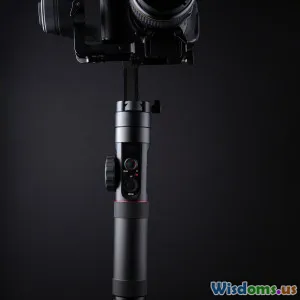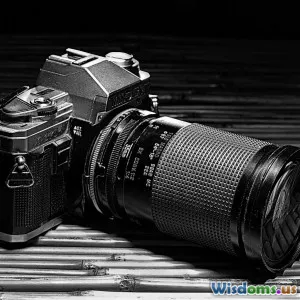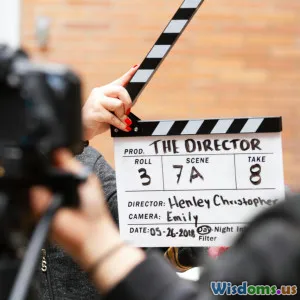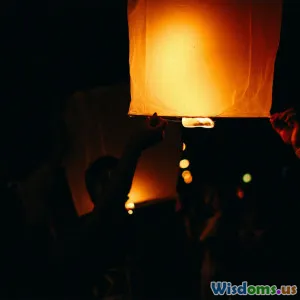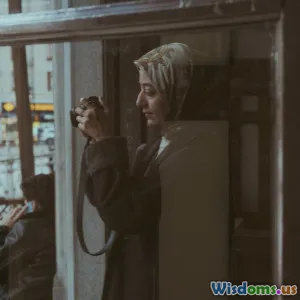
The Art of Storytelling Through Visual Media
9 min read Explore the captivating art of visual storytelling through photography and filmmaking. (0 Reviews)
The Art of Storytelling Through Visual Media
Visual media, including photography and filmmaking, transcends mere image capture. They are forms of art that intricately meld creativity and storytelling, engaging viewers on emotional levels. By understanding and mastering the art of storytelling, visual creators can communicate substances that resonate and linger.
Introduction
Imagine flipping through the pages of a photo album or losing yourself in a film; each frame reveals not just beauty or action but a compelling narrative that captivates the heart and mind. Storytelling through visual media is an art that traces back to the earliest forms of human communication—cave paintings, ancient scrolls, and now, digital screens.
In this article, we will dissect the essential elements of storytelling within photography and filmmaking. We will examine techniques and secrets that can elevate your visuals and foster a rich narrative experience, enabling you to engage your target audience much more effectively.
The Power of Visual Imagery
Visual storytelling sparks the imagination and can transcend the limitations of language, culture, and age. Studies reveal that visuals are processed 60,000 times faster by the human brain than text, a testament to their impact. People remember 80% of what they see and do, compared to just 20% of what they read.
Example: Iconic Photographs
Consider the haunting image of the “Tank Man” at Tiananmen Square in China, captured by Jeff Widener in 1989. Just a single photograph conveys a powerful narrative of courage, rebellion, and resistance against authoritarianism. Such images provoke thought and inspire movements without a word being uttered.
Crafting a Narrative Arc
Just as stories in literature possess a narrative arc comprising an introduction, rise in action, climax, and resolution, effective visual media must adhere to a similar structure to emotionally engage the audience.
Setting the Scene
The opening shot in a film or the first photograph in a series often sets the atmosphere and piques interest. A photographer must decide: what context best conveys the theme or emotion? Use the establishing shot technique to introduce space and emotion. For instance, in the iconic film Inception directed by Christopher Nolan, scenes of Paris folding upon itself establish an otherworldly context that intrigues viewers right from the start.
Building Tension
The rising action builds suspense, creating an emotional journey. For instance, while documenting social issues, photographers identify moments that challenge the viewer’s perception, evoking responses through stark contrasts—such as those seen in the work of famous photojournalist Henri Cartier-Bresson, who captures the “decisive moment.” His black and white photographs convey depth and provoke contemplation amid chaotic environments.
The Climax
In filmmaking, the climax is the moment of highest tension; visuals must magnify feelings that lead the audience toward resolution. An example includes The Shawshank Redemption, where countless visual storytelling techniques, such as lighting and tone, enhance the emotional climax—Andy Dufresne’s escape illuminates hope and resilience.
Resolution and Reflection
The conclusion involves an echo of the emotions portrayed, guiding the viewer through reflection. Films like Life of Pi, through stunning visuals paired with a moving narrative, instill a lingering sense of wonder that audiences carry long after the credits roll.
The Role of Composition
A fundamental element often overlooked in visual storytelling is composition, which significantly impacts how a narrative unfolds. Mastering composition allows photographers and filmmakers to control focal points and guide the audience's eyes.
Rule of Thirds
Using the rule of thirds can help create balanced and engaging visuals. By dividing the frame into three equal parts both horizontally and vertically, you can position focal points at the intersections for added impact. An example of this can be seen in renowned wildlife photographer Nick Brandt’s surreal portraits of animals, which breathe life into his storytelling through eerie landscapes that provoke emotion and contemplation.
Leading Lines and Framing
Leading lines and framing are also crucial. They direct the viewer’s gaze toward the story at hand or isolate the subject within the broader narrative context. This technique is exceptionally evident in the haunting and emotion-driven work of filmmaker Terrence Malick, who masterfully uses natural landscapes to symbolize the human experience.
Emotional Engagement through Color and Light
Just as writers use language to evoke emotions, colors and lighting play critical roles in visual storytelling. Different colors convey different feelings—red might signify passion or danger, through while blue could evoke calmness.
Example: Using Color to Convey Mood
The film Moonlight employs a carefully crafted color palette to symbolize the protagonist’s emotional journey. The cool tones highlight moments of isolation, while warmer hues convey intimacy among characters, creating a visceral experience.
Usage of Light and Shadows
Lighting can also alter perceptions and atmosphere. Cinematographer Roger Deakins is a master at utilizing natural light to create moods that align with storytelling intentions, exemplified in 1917, where continuous lighting elevates a sense of urgency and engagement.
The Impact of Sound in Filmmaking
While the focus lies chiefly on visuals, sound design in filmmaking enhances the narrative experience and emphasizes emotional beats. The synchronization of visuals and sound ensures a harmonious storytelling journey.
Example: Soundscapes and Scores
In silence, a scene may sometimes lose its richness, reduced to mere visual appeal. In The Revenant, composer Ryuichi Sakamoto intersperses gripping musical themes with the natural sounds of wildlife enhancing what could be a visually stunning yet emotionally subdued sequence.
Conclusion
The art of storytelling through visual media merges technical mastery with heartfelt emotion, creating compelling narratives that mesmerize and connect with audiences around the globe. Whether through the striking stillness of a photograph or the dynamic rhythm of film, a story elegantly shapes the human experience.
Embrace these techniques discussed and delve deeper into the art of visual storytelling. As you refine your skills, aim to harness personal experiences that resonate while engaging with broader contexts that stir empathy and understanding. With practice and intention, you can discover your unique voice in this enchanting medium, allowing your visuals to tell stories that inspire an emotional connection, provoke thought, and one day, perhaps facilitate change.
Rate the Post
User Reviews
Popular Posts
















